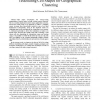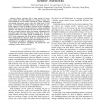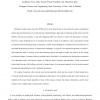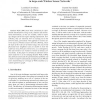23 search results - page 3 / 5 » Information Coverage Configuration with Energy Preservation ... |
AVSS
2007
IEEE
13 years 12 months ago
2007
IEEE
Wireless networks of visual sensors have recently emerged as a new type of sensor-based intelligent system, with performance and complexity challenges that go beyond that of exist...
IEEECIT
2010
IEEE
13 years 4 months ago
2010
IEEE
This paper investigates the energy-saving organization of sensor nodes in large wireless sensor networks. Due to a random deployment used in many application scenarios, much more n...
VTC
2008
IEEE
13 years 12 months ago
2008
IEEE
— Sensor networks with a large amount of sensor nodes usually have high redundancy in sensing coverage. The network lifetime can be further extended by proper scheduling and putt...
SECON
2008
IEEE
13 years 12 months ago
2008
IEEE
Stationary wireless sensor networks (WSNs) fail to scale when the area to be monitored is open (i.e borderless) and the physical phenomena to be monitored may migrate through a la...
WOWMOM
2009
ACM
14 years 9 hour ago
2009
ACM
Random Walks (RWs) have been considered for information dissemination in large scale, dynamic and unstructured environments, as they are scalable, robust to topology changes and d...




